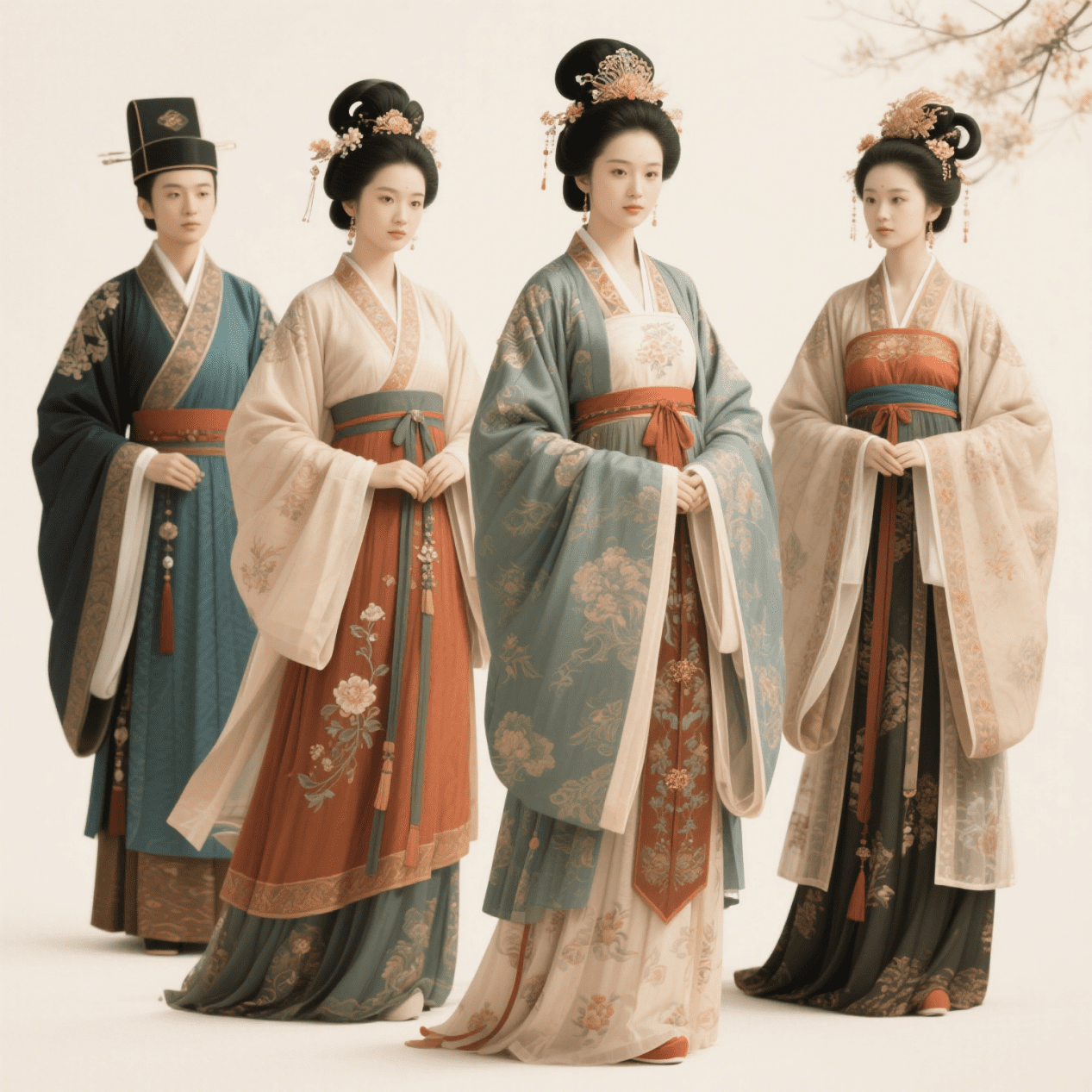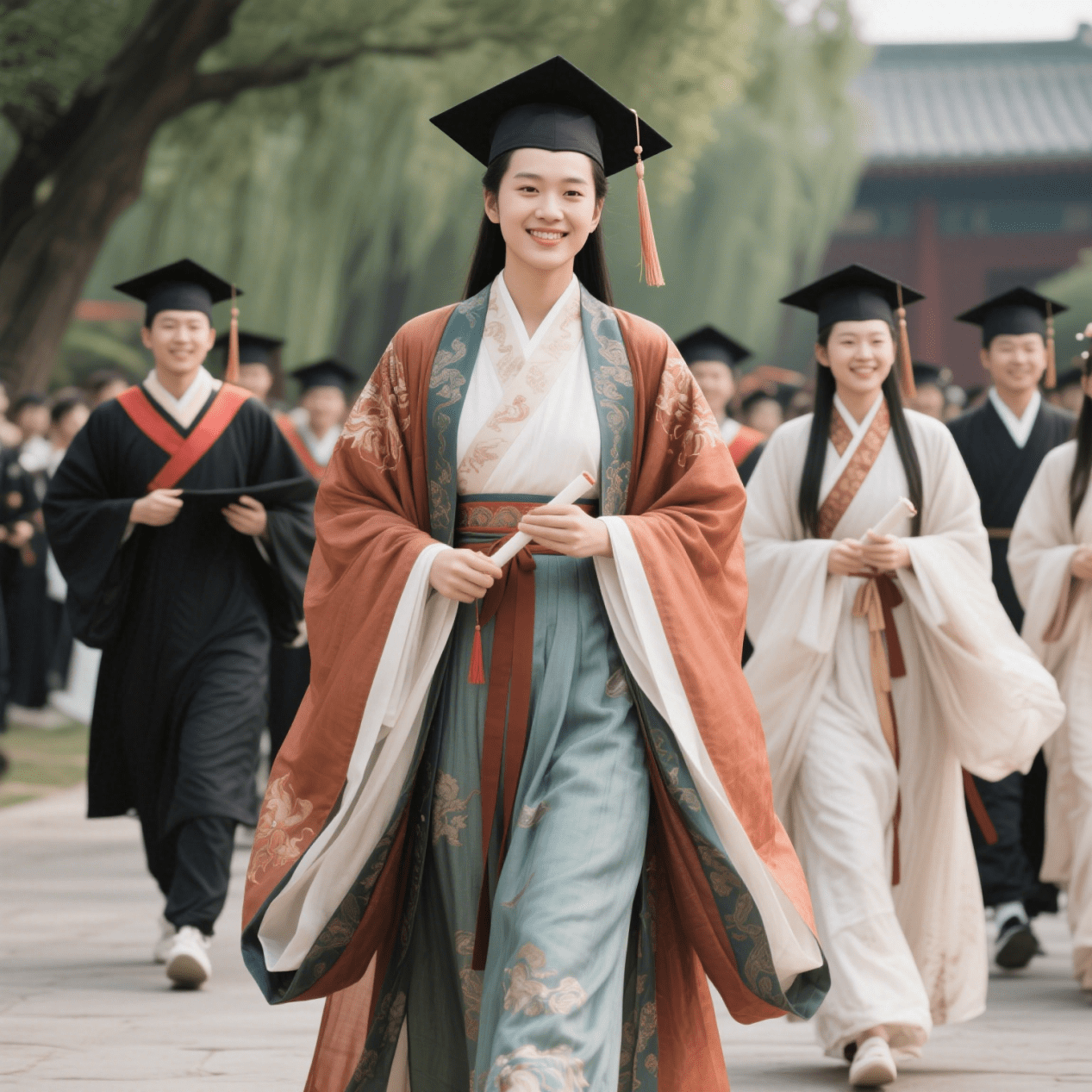China’s Ancient Fashion Revival & What It Tells Us About Modern Youth

When the Past Meets the Present
In the heart of Shanghai, a group of young people dressed in flowing silk robes and intricate hairpins gather for a subway “hanfu flash mob.” Nearby, a college student wears a Tang-style gown to her graduation, while a streetwear influencer pairs a Ming dynasty “horse-face skirt” with a cropped hoodie.
This isn’t historical reenactment—it’s China’s hanfu revival, a cultural phenomenon where ancient aesthetics collide with modern youth identity. With over 10 million enthusiasts and #hanfu amassing 30+ billion views on TikTok, this movement is more than just fashion—it’s a statement.
So why are young Chinese people embracing 2,000-year-old clothing? And what does this trend tell us about the future of tradition?
1.What Is Hanfu? (A Quick History)
Hanfu (汉服, hànfú), meaning “Han Chinese clothing,” refers to the traditional attire worn before the Qing Dynasty (1644–1912). Unlike the more widely known qipao (cheongsam), hanfu represents China’s pre-modern fashion legacy, with distinct styles from major dynasties:
Tang Dynasty (618–907): Glamorous, high-waisted dresses with bold colors (think: Mulan meets disco vibes)
Song Dynasty (960–1279): Minimalist, layered silhouettes—the “quiet luxury” of ancient China
Ming Dynasty (1368–1644): Structured jackets and pleated horse-face skirts (a viral trend in 2024!)
Fun fact: After the Qing Dynasty imposed Manchu-style clothing, hanfu nearly disappeared—until the internet generation brought it back.

2.The Hanfu Movement: Why Now?
A.Gen Z’s Search for Cultural Identity
In a globalized world, young Chinese are reclaiming their heritage—not through textbooks, but through fashion. Hanfu offers:
Pride in pre-modern Chinese history (beyond just kung fu and pandas)
Aesthetic rebellion against Western-dominated fast fashion
A sense of belonging in online communities (Bilibili, Douyin, Xiaohongshu)

Example: The 2023 “Hanfu Graduation” trend, where students ditch caps and gowns for Tang-style robes.
B. Social Media & Pop Culture Fueling the Fire
Cdramas like 《Dream of Splendor》 (Netflix) made hanfu aspirational
TikTok influencers mix hanfu with streetwear (#HanfuFusion)
Global fashion brands (Gucci, Dior) now borrow hanfu elements
C. Slow Fashion & Anti-Consumerism
Unlike fast fashion, hanfu is often handmade, sustainable, and designed to last—a perfect fit for Gen Z’s eco-conscious values.
3. Hanfu vs. Other Traditional Asian Fashion
How does hanfu compare to kimono, hanbok, or áo dài?
Feature Hanfu Kimono Hanbok
Silhouette Flowy, layered Structured, obi belt Short jeogori + voluminous skirt
Sleeves Extremely wide (dramatic!) Tapered Moderate
Modern Revival Youth-led, casual wear Formal/ceremonial K-pop influenced
Key difference: Hanfu is less rigid—you’ll see it at cafes, concerts, and even skate parks.
4. What Hanfu Tells Us About Modern Youth
A. “Tradition Can Be Edgy”
Hanfu isn’t worn the “historical” way—Gen Z remixes it with:
Streetwear (hoodies + horse-face skirts)
Goth & punk (black hanfu with harnesses)
Gender-neutral styles (men wearing Tang Dynasty sheer robes)
B. A New Form of Soft Power
While Japan has anime and Korea has K-pop, China’s Gen Z is using hanfu diplomacy—spreading culture through aesthetics, not politics.
C. The Rise of “Zhongguo Feng” (中国风)
Hanfu is part of a bigger trend: “China-chic” (国风 guófēng), where traditional elements blend into modern design (see: Li-Ning, Florasis, and even Starbucks’ hanfu-themed cups).





Responses